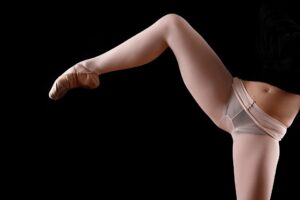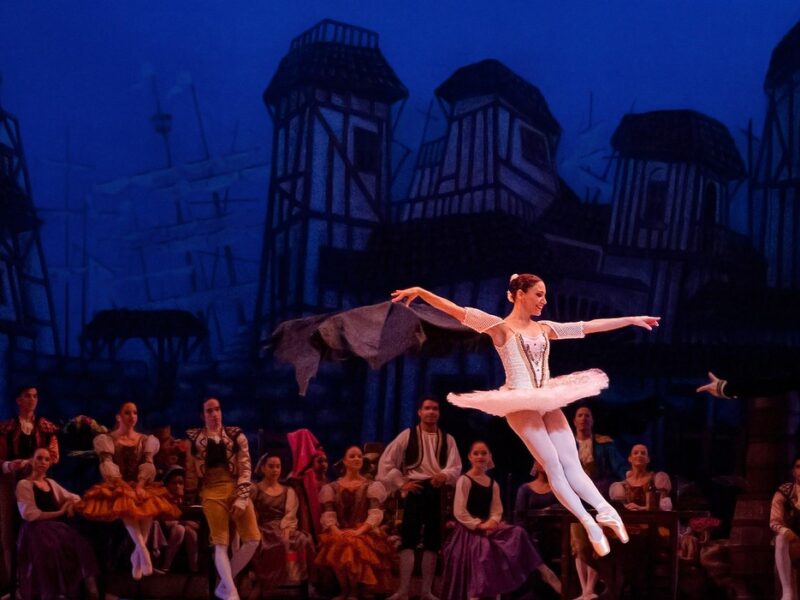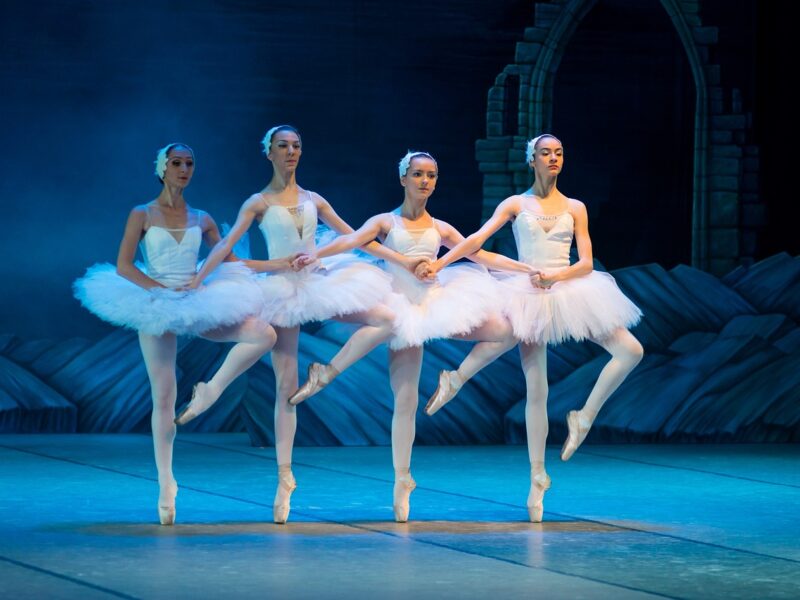Have you got stubborn legs that just don’t seem to get any higher no matter how much you stretch? Annoying…right? Well not for much longer! A lot of the time, dancers are led to believe that stretching is the key to improving the height of their leg extensions. This couldn’t be more wrong! Although we do need adequate flexibility to reach those soaring heights, the real secret to getting our legs up and keeping them there is a combination of a strong core, iliopsoas, and quads. Want to learn more about how you can gain this vital strength to improve your leg extensions? Keep reading for some of the best exercises to achieve a higher développé devant…
Okay, so we’ve established that we need to build strength in the iliopsoas to achieve jaw-dropping leg extensions, but what actually is the iliopsoas, and how can it help us in our quest for a higher développé devant?
Let me break it down for you… The iliopsoas, which is more commonly known as the hip flexor, is the main muscle we use during leg extensions. This is because we use our hip flexors for hip flexion, which is the lifting of our legs above 90 degrees.
It not uncommon for our hip flexors to become a little neglected, usually because dancers don’t always understand the importance of them or how they can be strengthened. This means that our hip flexors can easily become tight and weak, which can lead to the overuse and further tightness of other muscles and tissues including the quads, TFL muscle and the IT band.
Sounding familiar? If so, then it’s high time that you shared in my life-changing secret, otherwise known as the best exercises to improve your leg extensions!

Exercise #1 – hip flexor activation
Now this one may seem a bit too easy if you’ve already been training the hip flexors or if you dance at a professional level. However, it’s a great little exercise to give the iliopsoas a gentle kick into action, particularly if your hip flexors are feeling overused or if you’re coming back off an injury.
Imagine muscle activation exercises as switching on the ignition in your car, where in this case you’re waking up and turning on the iliopsoas so that it can be effectively engaged during leg extensions!
There’s lots of evidence to suggest that muscle activation involves a mind-body connection. To find this connection, picture your hip flexor contracting as you press your foot into the wall. Closing your eyes and placing your fingers on your hip flexors may help you to visualise this.
Step 1 – Stand facing a wall with one foot placed directly in front of the other. Place your hands on the wall in front of you for support
Step 2 – Push into the wall with the toes of your front foot and hold for 3 seconds
Step 3 – Repeat the exercise and then swap your feet over to try it on the other side
Top tip! Always wear trainers for this exercise to help you achieve a strong push into the wall whilst protecting your toes!
Exercise #2 – standing hip flexion
Now that we all know that the hip flexors are responsible for getting our legs up high in our développés, the real question is how can we strengthen them so that we too can improve our leg extensions?
Well, the simple answer is to lift our legs above 90 degrees! This standing hip flexion exercise is great for strengthening the iliopsoas, whilst building stability in the supporting leg – perfect for improving leg extensions to the front!
Step 1 – Turn to the side and hold the barre of the wall with your left hand
Step 2 – Keeping your left leg (supporting leg) engaged, lift your right knee as high as possible towards your chest. Your right leg should be bent
Step 3 – Hold for 5 seconds and repeat
Exercise #3 – assisted développé devant
Now this iliopsoas strengthening exercise is CRAZY HARD, so don’t be alarmed if you can’t lift your leg off the counter at all when you first try this exercise!
If you do struggle with this one, it probably means that your hip flexors are quite weak, or aren’t used to having to do any work! But the good thing about the iliopsoas is it can be strengthened, so please don’t feel deflated or give up after a couple of attempts if you’re finding it hard. It may take a while, but at some point, you will definitely see results!
Step 1 – Stand facing a flat surface such as your kitchen counter or barre. The surface you use should ideally be around the same height as your pelvis.
Step 2 – Place your working leg on the surface in a développé position (extended in front of you and turned out). Remember to keep your supporting leg pulled up and turned out as well!
Step 3 – Lift your working up off the surface and try to hold the position for a couple of seconds. This may be very difficult, so don’t worry if your leg doesn’t come off the surface at all. Simply keep trying to lift it, as doing so will help to strengthen the iliopsoas and core. Remind yourself to keep your torso pulled up and engaged- slouching may help you to lift your leg higher, but it isn’t the correct technique!
Step 4 – Lower the leg and repeat
If you’re struggling to balance, try this exercise in your dance studio using a large exercise ball. Place your leg on the ball and stand next to the barre with your back towards it, this will allow you to wrap your arms around the barre behind you for support. Remember that this is only for balance- don’t pull on the barre to help you raise your leg off the ball as this will make the exercise ineffective!
Exercise #4 – seated leg lifts
Now this is the final exercise we are going to use to strengthen our iliopsoas to help improve our leg extensions, however if you’re looking for more hip flexor exercises to achieve a higher développé devant, check out my article Floor barre for higher développés!
This exercise is tough for the hip flexors as they can are required to lift a straight leg which feels much heavier than a bent leg (like in exercise #2). In other words, imagine holding a shopping bag with your arm extended at 90 degrees, compared to holding the same shopping bag with your arm bent against your torso. The first one feels heavier, right?
Without delving into a physics lesson, this is all to do gravity, and the centre of mass of the object being lifted. When we lift a straight leg, for example during a développé, the centre of mass of our leg is further away from our core than it would be if we were performing an extension in attitude. This makes the leg feel heavier, which means the hip flexors have to do more work!
Seated leg lifts are a great way to prepare the iliopsoas for this tough task, and if they become too easy, you can always add ankle weights to increase the challenge!
Step 1 – Sit on the floor with your legs turned out slightly and extended in front of you. Place your hands on the floor behind you for support
Step 2 – Keeping your right leg straight, lift it as high as possible off the ground
Step 3 – Lower and repeat
Our minds are very powerful tools in ballet, and believe it or not you can make a difference to the height of your extensions through visualisation. When you perform this exercise (or a développé devant), imagine that someone is pushing your leg up from underneath your thigh.
If you do the opposite and visualise the leg being pulled up by the foot, your brain may subconsciously interpret this as a heavier load due to the foot behind further away from your torso than your thigh, which won’t help you to improve your leg extensions at all!
Exercise #5 – Swiss ball pike
Aside from strong hip flexors, we also need a stable core to help increase the height of our leg extensions. If you find yourself wobbling during your développés, this one is definitely for you!
Swiss ball pikes are a great compound exercise for targeting the core, quads and shoulders, and can also help to improve coordination! A lot of the time we rely on finding a spot that we can focus on with our eyes to balance, and whilst this may work in this studio, it becomes a lot more challenging under blinding stage lights!
This means that we need to learn how to use our core to balance if we want to improve our leg extensions, and the Swiss ball pike a great way of building this trunk stability.
Step 1 – Place an exercise ball under your feet and extend the rest of your body into a plank position. Your arms should be extended in front of you and your hands should be on the floor in line with your shoulders
Step 2 – Keeping your legs straight and your feet supported by the ball, engage your core and lift your hips into a pike position
Step 3 – Lower and repeat
Exercise #6 – turned out hamstring stretch
Many muscle work in pairs, meaning that when one muscle contracts (the agonist), the other muscle relaxes and lengthens (the antagonist).
During the latter part of a développé devant, the quad contracts to allow the leg to extend from attitude, and the hamstring lengthens to allow this contraction to occur. This makes the quad muscle the agonist, and the hamstring the antagonist.
The hamstring muscle be supple to allow the quad to contract and the leg to extend at a height. This means we must stretch it to achieve maximum height in our développés!
This exercise is great because it mimics the position of our legs in a développé devant (turned out with the working leg lifted into the stretch).
Step 1 – Sit on the floor with your legs extended straight out in front of you. Your feet should be turned out
Step 2 – Bend you left leg and use your right hand to hold the instep of your left foot
Step 3 – Keeping both feet turned out, extend the left leg upwards. Continue to support the left foot with your right hand
Step 4 – Hold the stretch for 30 seconds and repeat on the other side
Exercise #7 – lunges
It’s a common mistake for dancers to think that the quad lifts the leg in a développé, when in actuality this is the job of the iliopsoas. So what do we use the quad for?
When we développé, we need to use the hip flexor to lift the knee of our working leg into an attitude position that is as high as possible before we extend the leg (this will determine the height of our extension). Once we have reached that point, we need to engage the quad to straighten the working leg from its bent attitude position to complete the movement. This requires our quads to be strong, and to gain that strength we must train them!
Lunges are brilliant exercise for targeting the quads whilst also working on hip stability – perfect for improving leg extensions!
Step 1 – Stand with your feet shoulder width apart and your arms by your side
Step 2 – Step forward with your left leg into a lunge. Make sure your knees are always over your toes to keep the correct alignment!
Step 3 – Recover to a standing position and repeat on the other side
Too easy? To really get those quads firing up, try this exercise holding a dumbbell in each hand!
Final thoughts on how to improve leg extensions (développé devant)
Phew! We finally made it to the end, and we are now ready to start improving our leg extensions! If you’ve enjoyed this article containing all the best exercises for a higher développé devant then why stop there? Head over to Floor Barre for Higher Développés or How to Improve your Développé à la Seconde for even more top tips to help you achieve the extensions of your dreams. See you there, dancers!
**FRIENDLY DISCLAIMER: All information, guidance or advice provided on this site is for informational and educational purposes only. The use of this information is at your own risk. **

